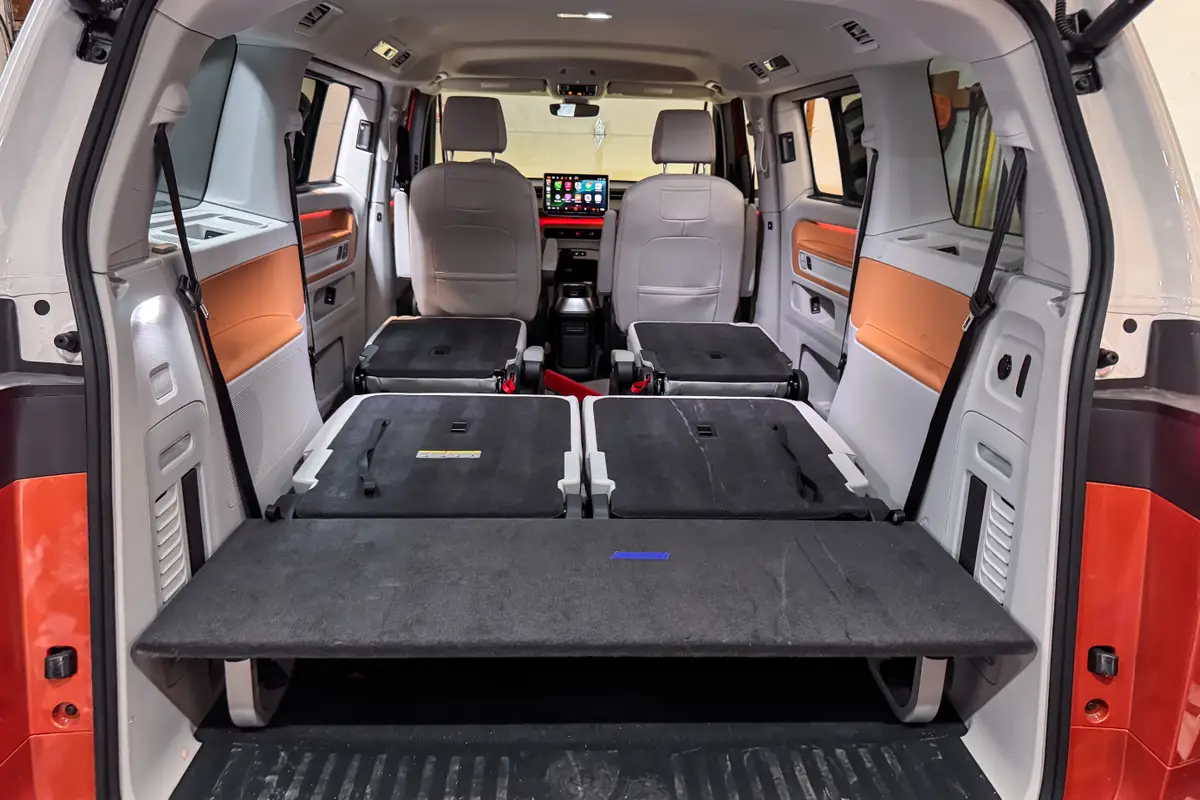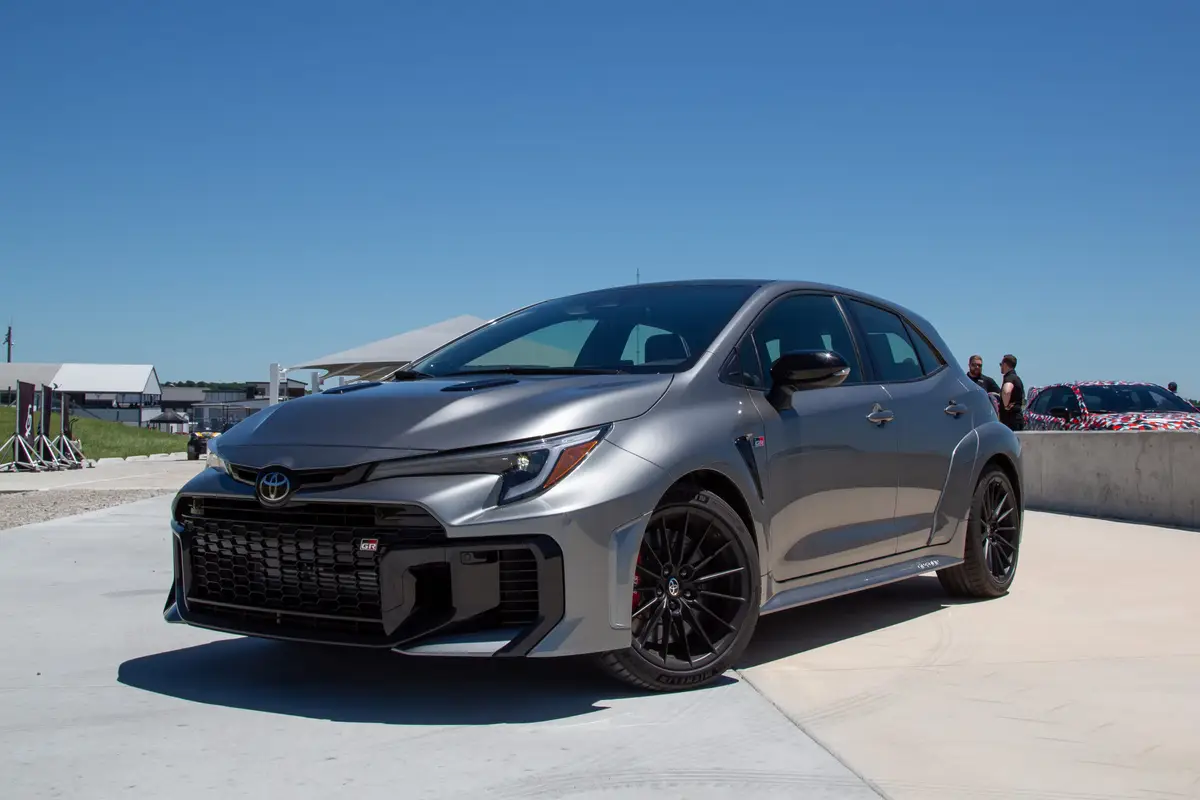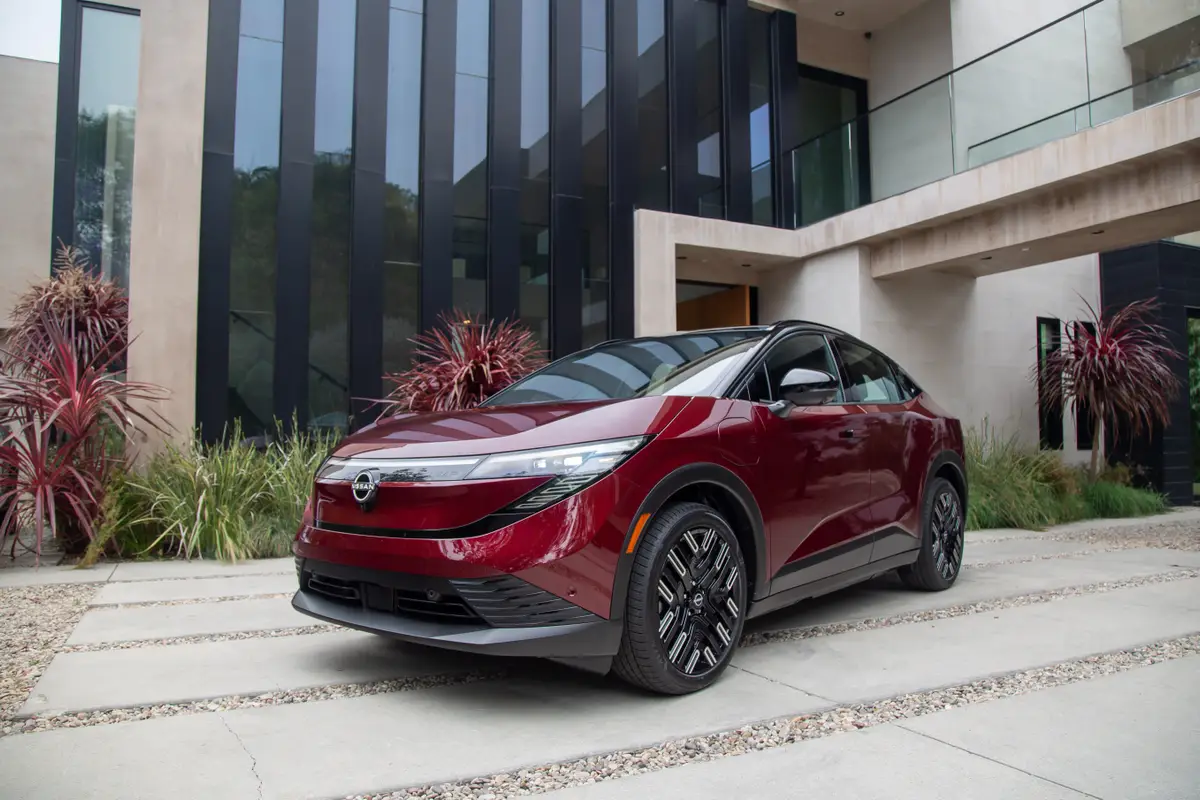New Government Regs To Impact Pickups
Let’s say it’s autumn 2024, andyou’re hungry for a new pickup truck. So you decide to stop at Uncle Sam’sRoadside Cafe to check out the menu and see what’s available.
Now, you love your good ol’long-bed, crew-cab 4×4 Tonka-like truck with its big, snorting V-8 engine andits pull-the-world-along trailer hitch. But it’s finally as worn out as that oldpair of work boots you leave out on the porch because your wife says they stinkup the house if you bring them inside.
Or maybe your truck is still ingood running order, but you’re the guy who’s lived on a meat and potatoes dietall his life but has been told by his wife and doctor that it’s time to learnto like tofu and yogurt, and that cargo rating and towing capacity aren’t asimportant as fuel economy and greenhouse gas emissions.
And while we’re looking at thenumbers — be they blood pressure readings or gas mileage figures — Uncle Samhas pretty much mandated that each automaker’s corporate average fuel economy needsto be at 54.5 mpg by the 2025 model year, and you don’t have much choice but toopen the CAFE menu and see if there’s anything you’re willing to swallow.
What's the Impact on us?
Sounds dreadful, doesn’t it? Andyet, right there on the menu, you’ll find an array of full-size pickup truckchoices that not only meet fuel economy and greenhouse gas regulations, but theystill can carry a bed full of rocks or tow your boat, camper or toy hauler. Howcan this be possible?
There are several reasons,including the fact that automotive engineers have a history of meeting whateversort of standards that governments around the world have thrust upon them. Andnot only have they met those standards, but while they’re at it they have alsofound ways to keep cars and trucks fun and fully functional.
Consider that way back in, say,the first decade of the 21st century, Detroit produced factory hot-roddedCamaros and Mustangs and Challengers that were clean and green and yet more powerfuland faster and far better-handling and much safer than anything from therevered muscle car era.
Not only that, but 13 majorautomakers — companies that account for 90 percent of the American new-vehiclefleet — have endorsed the latest federal regulations, and that pretty muchindicates that they’re confident they will be able to comply.
Don't be frightened
And here’s another reason:Don’t let that 54.5 mpg CAFE figure frighten you. Somewhere in the 1,300 pagesof new regulations from the EPA and National Highway Traffic SafetyAdministration is a chart that includes targets for things such as fuel economyand emissions for specifictypes of vehicles. Take into account projectedsales figures and market mix, and you’ll hit the 54.5-mpg figure. But therecipe also contains specific ingredients (i.e., mileage targets). For example,the figure for compact cars such as the Honda Fit is 61.1 mpg. It’s 48.0 mpg forfull-size sedans such as the Chrysler 300, and 47.5 mpg for what the governmentcalls a “small SUV” (think Ford Escape).
What’s the number for full-sizepickup trucks? Under “Table 2: Model Year 2025 CO2 and Fuel Economy Targets forRepresentative MY 2012 Vehicles,” an extended-cab Chevrolet Silverado with a6.5-foot bed is used as an example, and the table suggests that the 2025 versionof that same truck should average 33.0 mpg while emitting no more than 252grams of carbon dioxide per mile traveled.
By the way, that CO2 figure ishugely important. For one thing, the 10-page executive summary of the 1,230pages of proposed regulations is entitled “EPA and NHTSA Set Standards to ReduceGreenhouse Gases and Improve Fuel Economy for Model Years 2017-2025 Cars andLight Trucks.” Note that “greenhouse gases” is mentioned first.
Page 8 of that summary notesthat there are “incentives for advanced technologies including hybridizationfor full-size pickup trucks.” Although the final language has yet to beestablished, the text below that heading says the EPA is working on incentivesfor an automaker that applies “advanced technologies” such as hybridpowertrains or alternative fueling to a certain percentage of its pickuptrucks. That percentage appears to start at around 10 to 20 percent for the2017 model year and increase in the following years.
Supply and demand
There also are incentives for enhancingthe efficiency of air-conditioning systems, which the government sees as a bigproducer of greenhouse gases. More efficient air conditioning means feweremissions and even better fuel economy because such systems will use lessenergy to operate. Clean up your act, and you might be able to fudge on your mpgnumber.
If you’re wondering why allthis is happening in the first place, the summary of the new regulations notesthat “light-duty vehicles are … responsible for nearly 60 percent of U.S.transportation-related petroleum use and GHG emissions.” The target for thesenew regulations is to double fuel efficiency and halve the amount of oil weimport from OPEC countries.
Using less fuel lowers demand,the feds note, and the summary anticipates that reduced demand will reduce pumpprices by around $1 per gallon. The summary suggests that the equipment changesneeded to meet the new regulations will add some $1,800 to the average vehicleprice, but the resulting fuel savings over the life of such vehicles will be$6,000 or more. And those figures don’t include the health-care cost savingsfrom inhaling cleaner air.
Although engineering and installingthe needed equipment are doable, the big issue, according to a spokesman forthe automakers, is persuading the car- and truck-buying public to spend thatextra $1,800 (or whatever the actual figure may be a dozen years from now).
“It’s important to rememberthat CAFE doesn’t measure what we built as much as what we sell,” says WadeNewton, director of communications for the Alliance of AutomobileManufacturers, a Washington, D.C.-based trade association that includes a dozenforeign and domestic automakers. “There is no one standing at a factory to sayyou turn out this many vehicles and here’s the mileage. It’s what consumerspurchase [that determines CAFE compliance].”
Guiding the Marketplace
What the automakers fear,he said, is that they’ll build CAFE-compliant vehicles but that, unlike in thebaseball movie, the consumers will not come, that those vehicles will sit ondealers’ lots.
“New technology costs morethan the technology it replaces,” Newton says. “It’s always a challenge forautomakers to add new technology in a way so it doesn’t put the price of theproduct beyond the consumers’ reach.”
And it does no good, headds, for such vehicles to be parked in showrooms instead “of being out in thetraffic flow giving us the benefit of the technology.
“Consumers often will stayin their old vehicle that doesn’t have safety or other technologies that newvehicles have,” he says.
Meeting CAFE or other suchregulations, Newton says, is “more a marketing challenge than an engineering challenge,”but the engineering challenge remains daunting. “Every automaker has expressedwhat a hard job it’s going to be to meet the new fuel economy standards,”Newton says, adding that while working toward the 2025 model-year targets, theautomakers want the feds to include a midterm review of targets in the finalregulations. That review, he says, should include factors beyond theautomakers’ control, including consumer trends and even weather emergenciesthat can spike the price of fuel or increase the demand for pickup trucksneeded to rebuild stricken areas.
Automakers are adept atlooking six, seven or eight years down the road, Newton says, but the newregulations are forcing them to anticipate targets twice as far in the future.
And don’t’ forget that evenin 2025, people will still need things such as towing capacity and four-wheeldrive.
There is hope
Remember that 33.0 mpg figure?For the 2012 model year, Ford launched an F-150 with a 365-horsepower, turbochargedV-6 EcoBoost engine that has a maximum tow rating of 11,300 pounds and rated at 16 mpg in the cityand at 22 mpg on the highway.
Then, for the 2013 model year,Chrysler’s Ram 1500 comes with a normally aspirated 300-plus-hp V-6 linked toan eight-speed transmission, good for 25 mpg on the highway and 17 or 18 mpg inthe city (depending on whether it’s the special HFE model with start/stop engine technology)and enough grunt to pull 6,500 pounds behind its trailer hitch.
Such leapfrogging only willaccelerate. And there are new fuels — remember the emphasis is on greenhousegases — to add to the mix, such as diesels, propane, compressed natural gas, even hybrids.Think electric motors with their instant and maximized torque to get yourolling before your V-8 or turbocharged bio-diesel V-6 takes over and pullsthat load down the road. No doubt we'll be seeing some interesting technology in the next five years, but how much it will change our pickup trucks over the next 20 remains to be seen.

Featured stories




